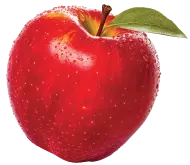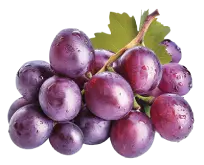Animated photo will auto launch in some browsers.
Artificial Colors & Flavors Concern Pet-Parents
Clean label means different things to different people. Clean label could mean, no artificial colors or flavors, no preservatives, short ingredient statements, familiar ingredients, or ethical sourcing, just to mention some of the trendier beliefs. For the past several years, no artificial colors, flavors or preservative call-outs have dominated the human side of the food industry. Pets are commonly treated as humans and valued family members, which is likely propelling pet-parents to demand the same free-from “negative” ingredients in the foods they feed their four-legged family members.
Recently, Petco began removing foods and treats containing artificial ingredients from their shelves. Their goal is to have an all-natural selection of pet food brands by May 2019. While some pet food manufacturers might scoff at this “radical” removal of several brands, it might make sense once you review some of the industry numbers. In a consumer study, of the respondents, Mintel found the following behaviors:
- 31% of dog owners and 25% of cat owners look for natural ingredients. These numbers are growing year over year.
- 40% of pet owners in the USA check the ingredients list of their pet food.
- Pet foods with all-natural ingredients saw an 8%-dollar growth in 2018.
Furthermore, Mintel’s data suggests this trend is not isolated to just the USA. Around the world, pet parents are becoming more invested and demanding higher quality ingredients for their pets:
- 61% of UK pet owners think it is important to check the labeling on pet food closely to ensure there are no hidden ingredients.
- 77% of pet owners in Spain want to see more all-natural pet foods. This is followed by Italy at 68%, France and Poland both at 64%, and Germany at 60%.
More than ever before, pet parents are concerned about the types of ingredients in their pets’ food. As previously mentioned, some of the key ingredients they are looking to avoid are artificial flavors, preservatives, and colors.
Some formulators are looking for a “more natural” way to flavor their product offerings. If a fruit forward taste is desirable, Tree Top’s purees and dried fruits might be the perfect solution. For savory flavors, many of the U.S. flavor houses offer flavors from naturally derived sources and could be utilized for your formulation needs.
Mentioning your application is always helpful, since flavor regulations differ between pet and human foods.
Manufacturers add color to pet foods to make the product more appealing to the owner. Colors can fool the eye and might be perceived as healthier or better tasting. Green, yellow, or red colors might be added to mimic foods like fruits, vegetables, or meat.
Some studies suggest artificial colors may have damaging effects. I am not commenting on the validity of these study’s, just referencing what consumers are reading and tend to believe. For those of us in the industry, we know food formulators for both pet, or human products, strictly adhere to using ingredients deemed safe and approved by internal experts, and Government Agencies. However, highlighted below are just a few examples of why consumers might be demanding naturally derived colors.
- FD&C Red #40 dye has been linked to cancer-causing contaminants and can lead to behavioral issues in humans and animals alike.
- Green #3 is banned in European economic communities and is associated with bladder tumors.
- Yellow #5 is banned in Norway and was cited as potentially causing chromosomal damage, allergies, thyroid problems, and behavioral issues.
Naturally derived colors have come a long way, and many human food manufacturers have converted their products over to utilizing these coloring forms. As an alternative, some use fruit or vegetable juice, powder or puree to carry the color.
Artificial preservatives serve a myriad of purposes, for instance, it keeps fat from becoming rancid, extends shelf-life and aids in color retention. Whether science based or not, consumer perception rules, and pet parents are concerned with preservatives found in their animals’ food. All you need to do is perform an internet search on concerns over synthesized preservatives and you will quickly discover where these fears come from. Listed below are a few that topped my search engine results.
- Ethoxyquin – EU suspended use of this antioxidant in animal feed.
- The New York Times sited that BHA and BHT are subject to severe restrictions in Europe, but are still used in American food products. While evidence on BHT is mixed, BHA is listed in a United States government report on carcinogens as “reasonably anticipated” to be a human carcinogen.
- Propylene glycol has become controversial since it is also an ingredient in antifreeze. This had led to health concerns about possible toxic effects from eating foods that contain it.
Although these ingredients are approved by FDA and safe, the consumer perception has led some pet food formulators to turn to mixed tocopherols as a natural preservative. Others have looked for ingredients the consumer recognizes to control water activity or to lower pH. Air- and drum-dried fruit powders contain fiber that exhibits hygroscopic properties to help control water activity, as well as naturally occurring acids that assist with pH regulation. Concentrated ingredients, such as juice or purées, depending on the level of solids or texture desired, can also help reach targets for soluble and insoluble fiber. Depending on the application fruit can help lower the pH and perform as an antioxidant.
Petco’s move might be the first of its kind, but other distributors and retailers could follow suit. This might be a prime time for pet food manufacturers to have an opportunity to capitalize on this trend. If you would like a sample of Tree Top’s fruit powders, purees, or juice concentrates to assist with your formulation needs, click here. To learn how fruit ingredients can aid and extent shelf life in food systems – view our white paper titled Clearing Hurdles, which can be found under our resource navigation tab.




